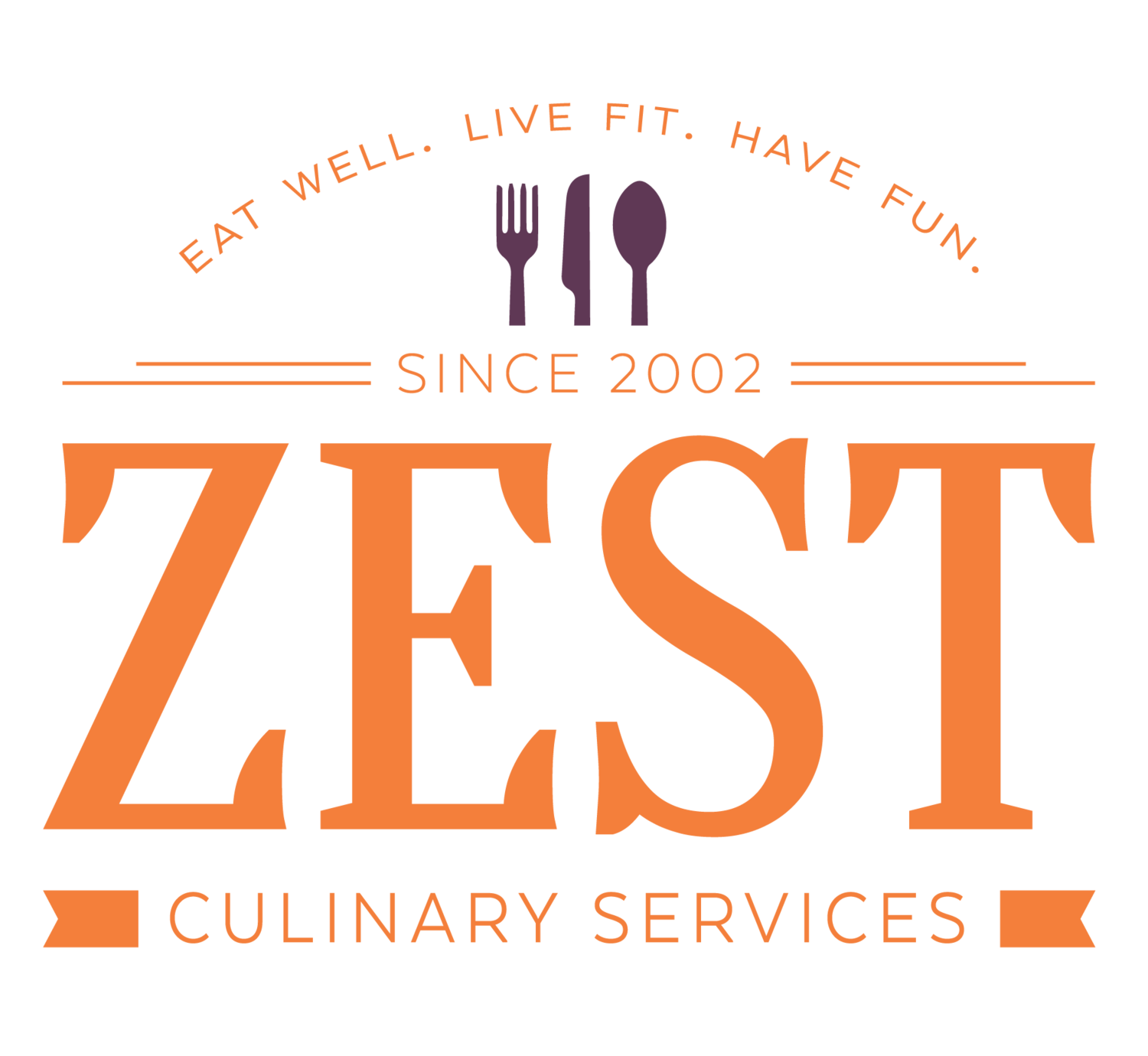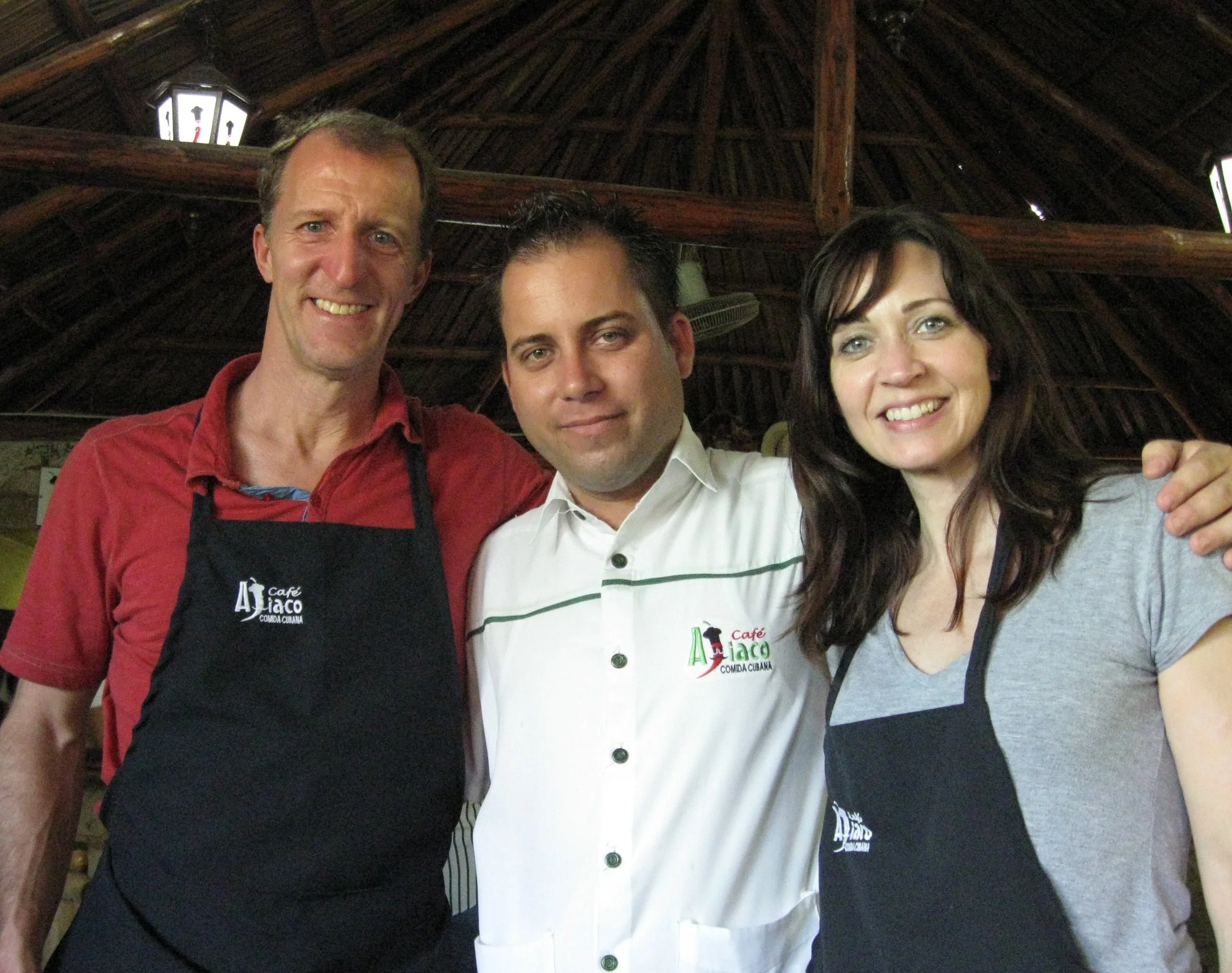"Why?" was the response we received from far too many people when we said we were headed to Cuba. Seriously? "Why not? Because we can." With travel restrictions to Cuba easing we were more than curious to dive in and learn all we could about the food and culture in a country that has been off limits to Americans for over 50 years. So we got our visas and hopped on a plane with a few of our friends to check it out for ourselves.
We usually aim to keep it brief. So I apologize in advance for the length of this blog. But before diving into Cuban food I need to paint the scene. So grab a cigar and a glass of rum, settle in and read on!
It's hard to know where to begin to describe what we experienced. Interesting and fascinating are the two words that come to mind the most. Our trip included stays in the capital city of Havana and Santiago de Cuba, known for its vibrant art and music scene, and a day trip to rural Vinales, the tobacco capital. On arrival in the bustling city of Havana it was immediately evident that in it's hay-day Cuba was a remarkable place with architecture reminiscent of some of the most beautiful destinations in Europe. But as we walked and rode through the streets (in our 1950s cars of course) and observed the crumbling structures and colorfully painted but faded, peeling facades I couldn't help but wonder if this is what it was like to live in Europe post World War II. That's not to say that it wasn't beautiful. It was in its own way but not necessarily by US standards. What made Cuba beautiful to me was the geography, the glimpse of what was and perhaps could be again, and its people. They seemed happy and kind. Family is still of utmost importance and whether family, friend or stranger they take care of one another. I could go on and on but I know you want to hear about the food...
To be honest, the food and dining scene in Cuba was not quite what we expected for such a lush tropical country. Food is rationed in Cuba and most enterprises are government run. But in more recent years some private business licenses have been granted so we patronized these "paladar" restaurants as much as possible. Throughout its history Cuban culture and cuisine have been influenced by many cultures including the Spanish, French, Italians, Africans, US, Chinese and Russians yet food options in restaurants (not to mention grocery stores) were quite limited. A typical menu included mains of beef, chicken, pork and fish or seafood in basically the same preparation across restaurants. Meals were accompanied by black beans and rice, tomatoes, cucumbers and cabbage simply seasoned with salt and pepper and drizzled with a light vinaigrette. Dessert, when available, was typically flan. That said, though we ate a lot of the same throughout our stay everything was delicious and always freshly prepared from scratch.
One of the highlights of our trip was a visit to Ajiaco Cafe for our cooking class and an organic garden tour. Ajiaco is a paladar that opened 5 years ago and is nestled in a beautiful and peaceful fishing village just outside of Havana. It was a welcome contrast to the noise and crowds of Havana. We were warmly greeted by our host and founding employee, Roy, along with the entire restaurant staff.
Jesus showing us his farm.
Our class started with a walk down the road to the organic garden that supplies the restaurant. Jesus and his brother are hobby gardeners who rescued a small plot of overgrown land on their mothers' property converting it into a sustainable, chemical free garden. Jesus led us on a tour of the garden, which was abundant with fresh herbs, tropical fruits and vegetables. There we learned of the purpose of everything in the garden and of their sustainability practices. We also began to realize that while re-purposing and up-cycling is chic and trendy in the US it's a way of life in Cuba.
Next we went back to the restaurant to get cooking! As we learned about the history of Ajiaco we discovered that much to our surprise the restaurant was founded by someone in our own back yard, Chef Angel Rafael Roque. Chef Angel, who was born and raised in Cuba, moved to Philadelphia about a year ago to join the staff at Cuba Libre. He was recently promoted to head chef and transferred to the restaurants' Washington D.C. location.
First up was a lesson in Ajiaco stew, a centuries old dish for which the restaurant was named. Aijaco dates back to the Spaniards arrival in Cuba in 1492. The original recipe was a broth made with wild game du jour - snake, rats, monkeys - whatever they could find. (Yikes!) Today the stew features a mix of flavors from around the world and its ingredients have evolved with Cuba's history. I am happy toreport that the protein component in the modern recipe is a combination of pork, beef and poultry. African slaves added hot peppers, plantains and sweet potatoes. The Chinese are credited for the addition of spices - cumin, oregano and bay leaf. The French, Italians and Americans have also contributed to the recipe over the years. Normally "Too many hands in the pot ruin the stew.". But we found Ajiaco stew to be quite the opposite!
In the kitchen, Roy instructed the chefs to stand back and let Theo and I go to work. With their guidance we learned to create Ropa Vieja, a popular shredded beef dish that for reasons unbeknownst to us is named "old clothes" and Cuban-style camarones (shrimp). We then moved on to the bar with a lesson in Ajiaco-style Mojitos (made with dark rum and honey).
Finally, we sat down to a multi-course Cuban feast. The menu included assorted mini brioche-type rolls, croquettes made with fish, casava and bacon and vegetable empanadas accompanied by tamarind mayo and a garlic paste with olive oil and parsley. Ajiaco Stew was up next followed by black bean soup, rice, the beef and shrimp dishes that we prepared, and a creative dessert of french toast flan in sweet potato puree drizzled with a basil and honey syrup. No meal in Cuba would be complete without coffee and a cigar during which we were treated to one final lesson in an old school method of coffee brewing. You can see it for yourself and enjoy a snapshot of our cooking class experience in this video:
We found our experience at Ajiaco Cafe to be unique for Cuba. So upon returning home I caught up with Chef Angel to learn more about his vision for Ajiaco and what it's like to now cook Cuban cuisine in the US. Here's what he shared.
"Ajiaco has been my most important professional dream, especially in Cuba which is a country with so many limitations and prohibitions. When I created the idea and the concept I did it based on the few restaurants that existed in Cuba in those days with a real and authentic Cuban menu, it means for me that you can choose from appetizers to desserts different offerings that really represented Cuban heritage. I wanted to create something that nobody had done before, wanted to rescue dishes that were from centuries before and some of them with mysticism and legends associated with their history, all those details I wanted to be part of the concept of Ajiaco."
Chef Angel went on to describe the evolution of Cuban cuisine throughout its history noting that "In the 90’s, one of the toughest times in my country, Cuba was starving. In that condition a whole generation lost their concept of the Cuban food. We just needed food. It didn’t matter what kind, we needed to be fed. Private restaurant is, in my opinion the best thing that happened to the Cuban food. A lot of chefs, real professionals with a lot of ideas and new concepts wanted to prove themselves running restaurant without a government company ruling their business. Cuban cuisine has been reborn and it’s trying to gain back all those lost years."
As for Cuban cuisine in America, Chef Angel says that it has largely been shaped by those who left Cuba in the 50s and 60s at the start of the revolution and settled in Miami. Their idea of Cuban food in America is "stopped in time" resulting in a "very limited spectrum of Cuban dishes and styles in America.". He has also seen Cuban cuisine "mixed up" with spicy South American cuisine, which is not in line with Cuban tradition. "Most of us do not like spicy or hot food. We use a lot of spices but not hot food. You can see some spicy Cuban food in the eastern side of Cuba but it’s not a rule in our tradition.
Today you can see in private Cuban restaurants plenty of new ideas with the roots of our ancestors and that’s what really needs to happen with the Cuban food here in America. We still have a lot to learn in my country about ourselves and about our traditions but the rescue time is on and that makes me feel really happy."
We're happy too, Angel and we look forward to seeing what's next for Cuba!
Hungry for more? This blog is the first in a 3-part series about our experience in Cuba. Subscribe to the Zest blog to receive a Taste of Cuba Part 2: Mojitos and "Good Grass" in your inbox.



